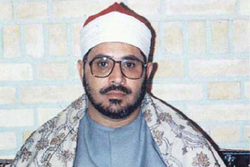Aesthetic Features of Shahat Muhammad Anwar’s Quran Recitation


In the course of each of his recitations, there is proportionality between Lahni (tonal) sentences and his making of symmetries is very creative and with certain extents.
Shahat Muhammad Anwar (1950-2008) grew up in a region where Quran recitation was under the influence of recitations by Sheikh Az-Zinani and Mahmoud Hamdi al-Zamil.
It seems that in his recitation, Shahat considered every word to have an independent character and read them out individually. This was because he had many times listened to recitations by al-Zamil.
Another feature of Shahat’s recitation is harmony. There is a unity, balance, cohesion and harmony in the elements of his recitation. In the present-day world where the cyberspace has dominated all aspects of life, the new generation is usually not in the mood to listen to all of the recitation and listens to part of it. This prevents them from learning harmony and reciting in order.
A question that may be raised for the future generations of qaris is what makes Shahat’s recitation beautiful. In order to answer this question we need to know what features a work of art has. When we study the basics of aesthetics and philosophy of art, we get to certain principles, including order and regularity, which attract the audience.
Shahat’s recitation has regularity, order and framework. Another principle is symmetry and proportionality. There is proportionality between Lahni sentences in Shahat’s recitation and that of, for instance, Mustafa Ismail. Making symmetries is very creative and has certain extent in Shahat’s recitation. An example of this can be noticed in his recitation of the first verses of Surah Ash-Shams. Shahat thought carefully about these designs and gradually his recitations became more competent.
He knew the music of words and concepts of verses. He certainly practiced these designs in private and in recitation circles and gradually managed to use them in his performance and create outstanding recitations.
In Shahat’s receitations we see an order much greater than that in recitations of Master Abdul Basit. Although Abdul Basit’s recitation followed a fixed model, that of Shahat’s is special.
In a certain period, Shahat’s recitation was regarded as the criterion for judging contenders’ performance in Quran competitions in the country.
Here is his recitation of Surah Ad-Dukhan, verses 10-12:


